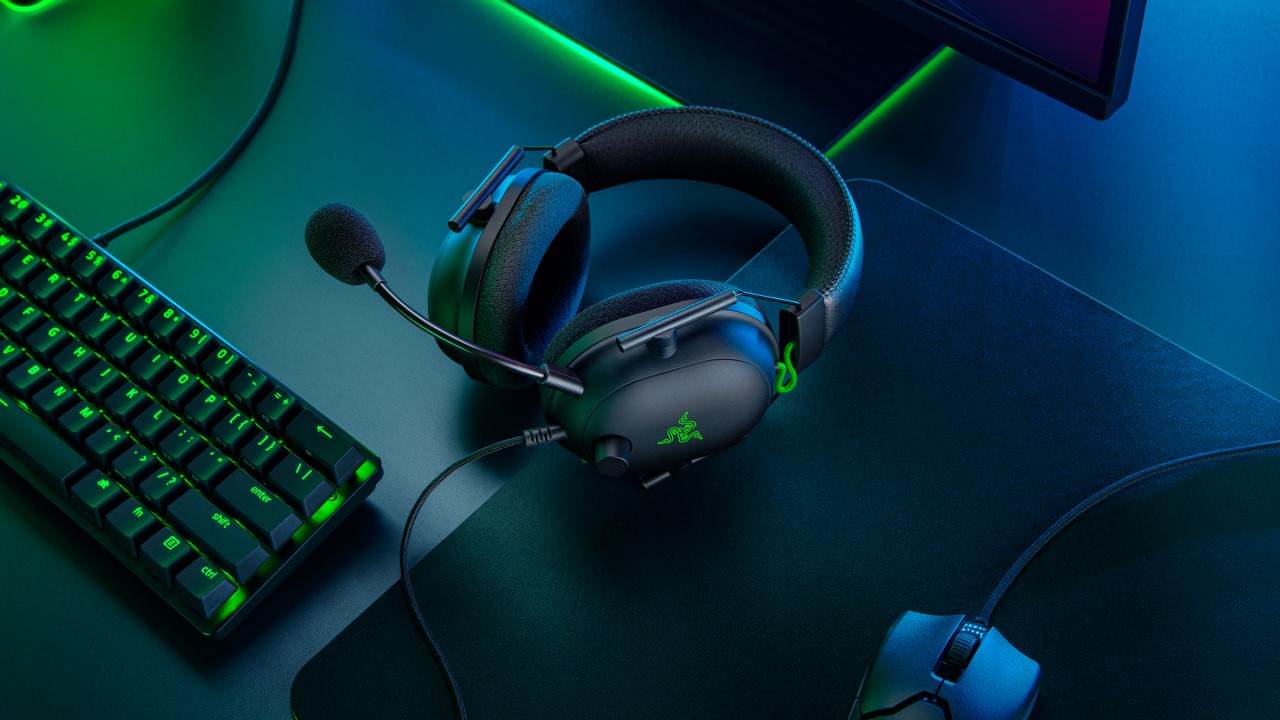GamesRadar+ Verdict
The BlackShark V2 is comfortably one of the best headsets we've ever tested. Razer has surpassed its own standards and reputation - and that of the wider market - and has created as near a perfect gaming headset as you can get.
Pros
- +
Exquisite game audio
- +
Brilliant richness and audio detail
- +
Very comfortable
- +
Near-endless versatility and customization with the app
- +
Great bang-for-buck value
Cons
- -
Not all features available on console (but it sounds great anyway)
Why you can trust GamesRadar+
If you've ever shopped for a gaming headset (or even if you haven't, actually), you'll know of Razer's pedigree, premium audio, and excellent reputation. That carries across to the Razer BlackShark V2, a product the company is now calling its definitive esports headset. Like a phoenix from the fire, it's an old name that's getting a new lease of life.
Has it all worked out? Well, we know Razer headsets are some of the best gaming headsets going, but they might never have been better than the Razer BlackShark V2.
Just before we get into the meat and potatoes of the BlackShark V2 review, it's worth mentioning that Razer recently released a wireless version in the form of the BlackShark V2 Pro. This was released as part of a wireless triumvirate along with a tether-less DeathAdder (arguably the best gaming mouse), and BlackWidow, potentially one of the best gaming keyboards. Suffice to say that the quality of the BlackShark V2 is accentuated further by going wireless and cutting the cord. To give you options, we've included the latest prices on that headset here too - it's a jump but there's good reason for it as it offers Razer's HyperSpeed wireless connection and a battery life of up to 24 hours, an additional audio chamber for even better game audio, and a brand new mic. All things considered, that's a hell of a wireless set, and one of the best wireless gaming headsets on offer.
Anyway, back to the BlackShark V2 review proper...
Design
Interested in all things Razer? Then you should definitely check out our guides to what else Razer offers on headsets, Razer laptops, the best Razer mouse and Razer keyboards you can get, the top picks for a Razer controller, and the best Razer streaming gear going.
For those familiar with what came before, the Razer BlackShark V2 has a design that only loosely follows the original. There are similarities in the earcups and maybe in the overall form-factor, but otherwise, it is its own design and looks at home in 2020's gaming headset market.
The earcups are neat ovals so offer a plusher fit, and they - along with the headband - share excellent padding that is supremely comfortable to use and wear for long play sessions. It's worth mentioning that the fabric material of the BlackShark V2 differs slightly from the leatherette on the V2 X as well, and it's definitely more comfortable as a result. Because those earcups will shape to your head and the entire 'length' of the headband is padded, you're also left with a very comfortable fit that blocks out background noise by design alone.
You might not think so at first glance. The earcups have a 'detached' design to them, only being connected to the headband by a light metal frame and the necessary Razer-green cables. This has a great effect on weight, with the headset weighing only 9.24oz (262g). It's barely noticeable when on, with little strain added to wearing them for a long time.
Elsewhere, the weight is kept down by the mic being detachable. Yes, there's a great big volume dial on the left cup for onboard control, but it's much better than the smaller sliders or buttons we might see on other headsets. It's a simple design, one complicated only by the USB sound card that the braided cable's jack plugs into.
Naturally, the sleek Razer aesthetic of matte black and bright green are tastefully draped over the whole thing. Even Razer's green makes an appearance inside the USB connection, much like with ports on Razer's Blade laptops.
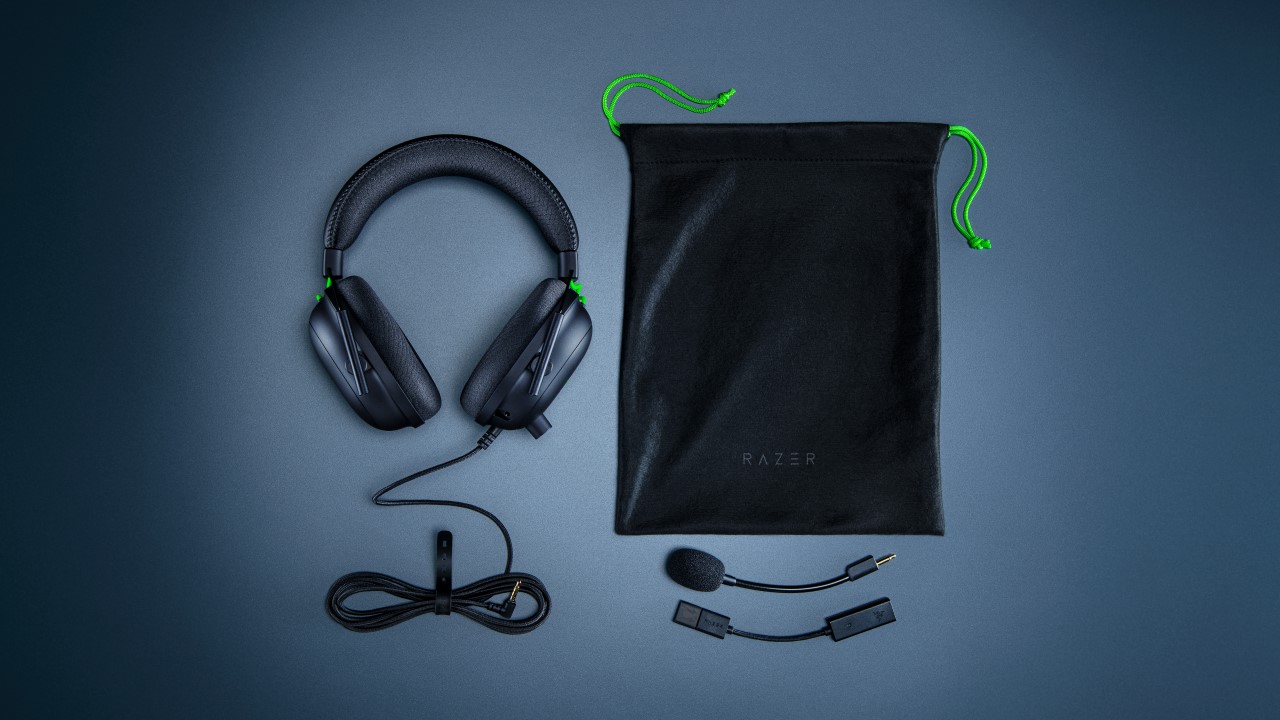
Features
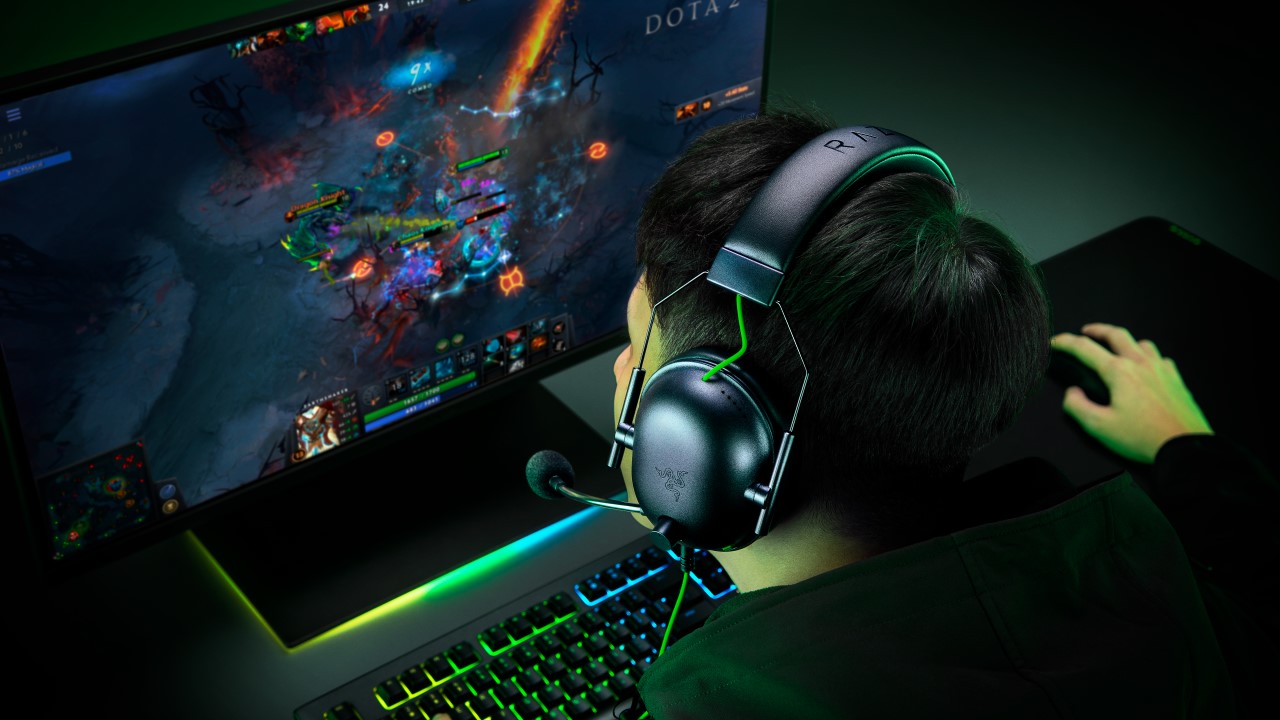
Type: Wired (3.5mm jack + USB Sound Card)
Sound output: Spatial audio
Microphone: Flexible boom arm, detachable, unidirectional
Compatibility: PC, Mac, PS4, Xbox One, Switch, mobile
Controls: Mic mute, volume
Impedance: 32 Ω (Ohm) @ 1 KHz
Frequency response: 12 - 28000 Hz
Things start to get genuinely exciting when you look past the design. This is because the BlackShark V2 is not just another Razer headset; it's a Razer headset with brand new features we haven't seen before baked into it. These elevate its quality immensely.
The first headliner is Razer's TriForce Titanium 50mm drivers. These split the audio driver into three distinct parts - lows, middles, and highs - and allow the Razer BlackShark V2 to have distinct audio within each frequency. Rather than one driver for all the sound, this three-in-one approach means the levels are given individual treatment. The result of this is exquisite sound across all frequencies, with no muddiness or blurring between them. Clarity and detail are kings here.
The same goes for the new mic. This is Razer's new HyperClear Cardioid mic that features a design optimized for an accurate recreation of your voice, all without allowing much background noise in (or obstruction to your face). While the mic on its own would be a terrific new feature, it's specifically designed to work with the USB sound card, too, enabling you to improve or customize your voice's output using a whole host of settings. I will add that the default settings are exceptional straight out of the box, and it felt a bit over the top to fiddle with, but the option is there if you want to customize the experience.
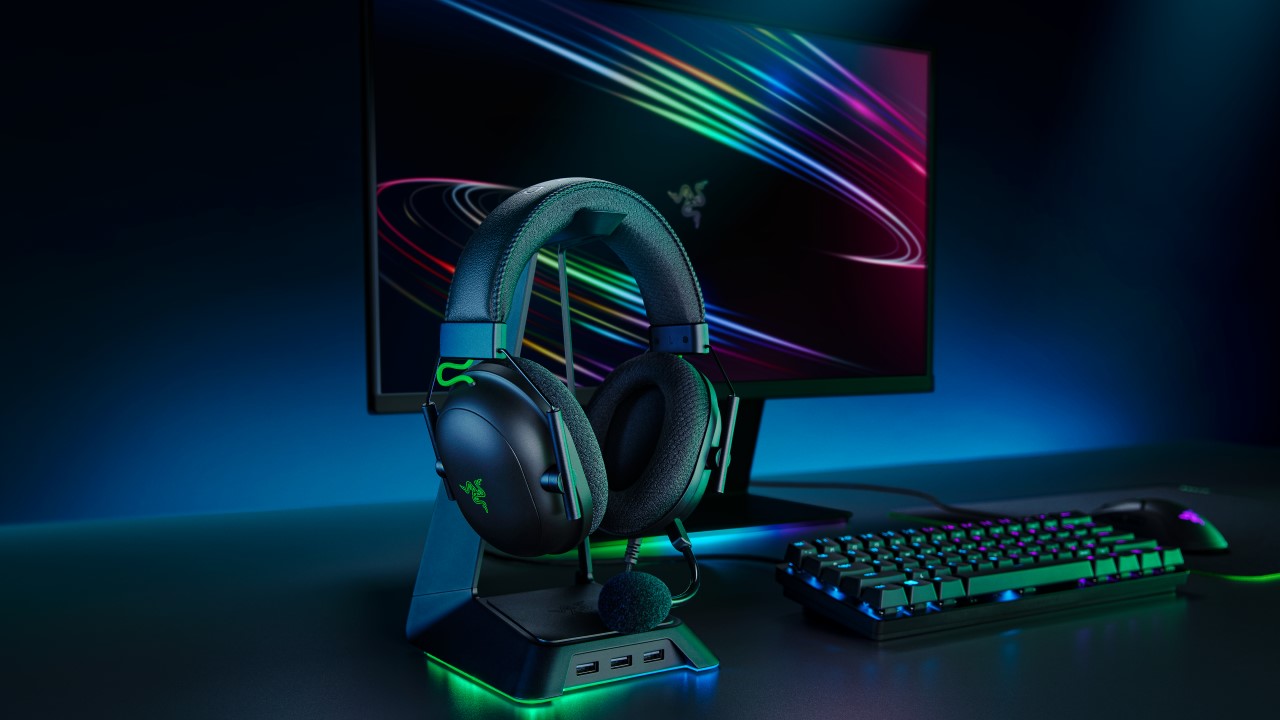
While the design of the headset only caters for two onboard control features, this is extended exponentially by the incorporation of the new THX Spatial Audio app. This is activated via Razer's Synapse 3 software and opens the door to a whole world of audio control, customization, and refinement. That takes the already excellent Razer BlackShark V2 headset to another level. It's here that you can arrange the shape and sound of your audio by pushing and pulling virtual speakers closer or farther away from you, select from a range of pre-tuned EQ's and settings (or make your own), and enjoy a brand new feature that's designed to enhance individual games: THX Game Profiles, released on August 8, 2020.
These are pre-tuned profiles that have been crafted with direct input from game developers of games like Apex Legends, Valorant, and Call of Duty: Modern Warfare, elevating the audio experience of these games and getting them as close to how they are 'meant' to be as possible. I got to test a few of these and they offer yet another layer of successful and beneficial customization.
These brand new and exciting features enable the Razer BlackShark V2 to offer way more than most, and I haven't even told you how good it sounds yet.

Performance
Simply put, it sounds magnificent. The BlackShark V2 offers up some of the best game audio, nay, audio generally, that I have ever experienced in a gaming headset. In Red Dead Redemption 2, I can hear every rustle of wind through the foliage, every shout through the snow or across gunfire, and all the minuscule audio details of life in the Wild West. Everything is excellently clear and immersive. Using the BlackShark V2 to finish my playthrough of Control was a genuine joy, too.
However, I had to tear myself away from the singleplayer games to test the new BlackShark's mic, despite not wanting to leave the audio immersion I had. My go-to online game at the moment is The Division 2 with two buddies, and immediately, they were struck by the clarity of my voice. What's more, the incidental sounds of post-apocalyptic D.C. were brilliantly presented, with previously unheard details such as echoes and wind bouncing off tall buildings now audible and clear. The gunfire and action cut across the environmental noises perfectly though, giving great richness to gameplay audio. Meanwhile, my voice - and the voices of my teammates - cut across that in turn, so nothing went unheard or was missed in a cacophony of noise.
Apex Legends is another great test of any headset, and the BlackShark V2 was a perfect companion here as well (particularly as it's one of the game profiles I was able to try out). With the Game Profile off, the headset felt right at home with Apex Legends, with footsteps and gunfire clear and exquisitely positioned in the soundscape to help identify foes. With the Game Profile on, however, everything is enhanced and seems ever so slightly clearer, more detailed, rich, and balanced. Can recommend.
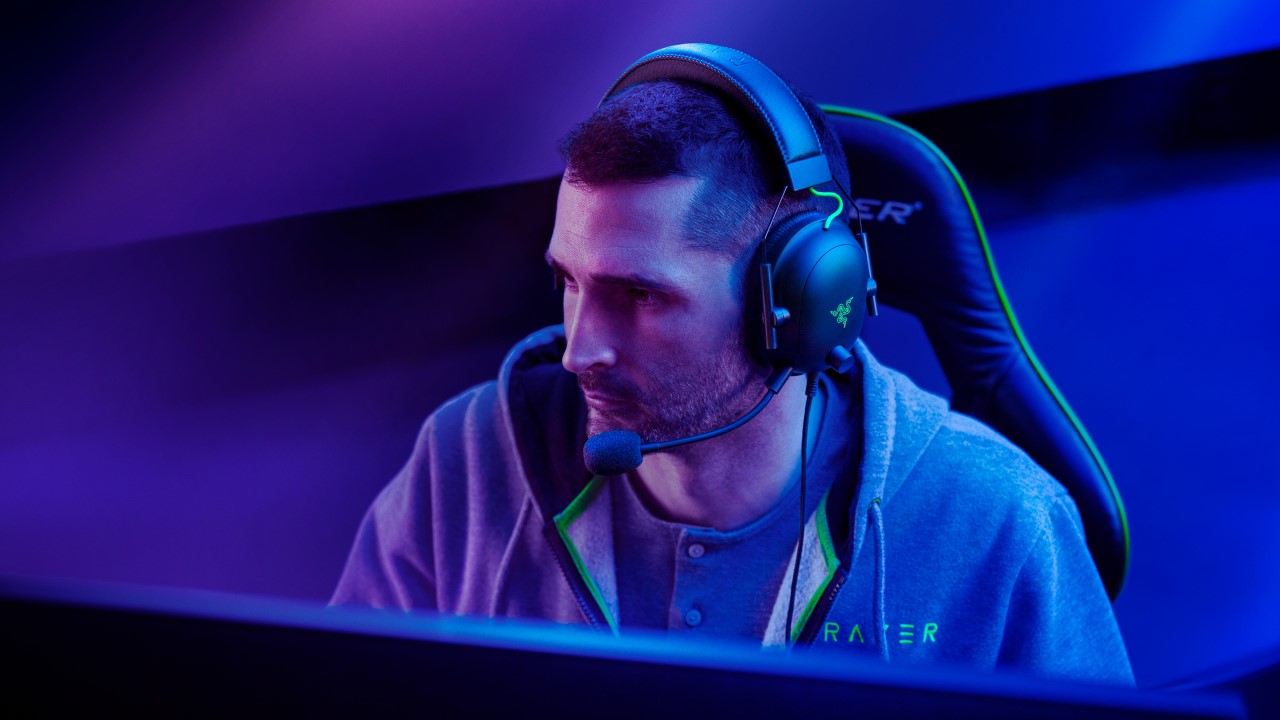
Bouncing between single-player and online multiplayer games enabled me to test the two main modes within the THX Spatial Audio app, too: Environmental Mode and Competitive Mode. The former is better for single-player games because it realistically emulates sound around you based on the game's world, while the latter takes identifying friends' and foes' locations to an excellent level, giving you great spatial awareness. Team this with the aforementioned Game Profiles and it's a winning combination.
While perhaps not its most natural gaming companion (it's primarily focused on PC gaming), the Razer BlackShark V2 is rapidly becoming my go-to headset on PS4 too. You will, of course, lose the customization and versatility that the app and USB sound card offer when it's PC-bound, but it is still excellent nonetheless; you benefit from the microphone's innate quality and the TriForce drivers.
Turning to non-games use, the mic is lovely for meeting use, as it is exceptionally clear for my colleagues, while they themselves are presented crisply. The same went for watching TV and films through it. Where others struggle to give rich and fulsome voice and speech, the BlackShark prevailed. And if it's not quite right, a small adjustment in the app is all it takes to get it perfect.
On to music. Although I'm not a massive audio snob or overly fussy, my ear is tuned well enough to know when a headset feels 'right', and given that the headset was great for music-driven game sequences like those in Doom or like Control's Ashtray Maze, it was no surprise to hear that this extended to everything else from sweeping orchestral soundtracks to metal music, to country and bluegrass, and everything in between.
Whatever you use the BlackShark V2 for, when you team it with one of the best gaming PCs - like the ASUS ROG GA15 PC that I use in my setup - the results are truly excellent.
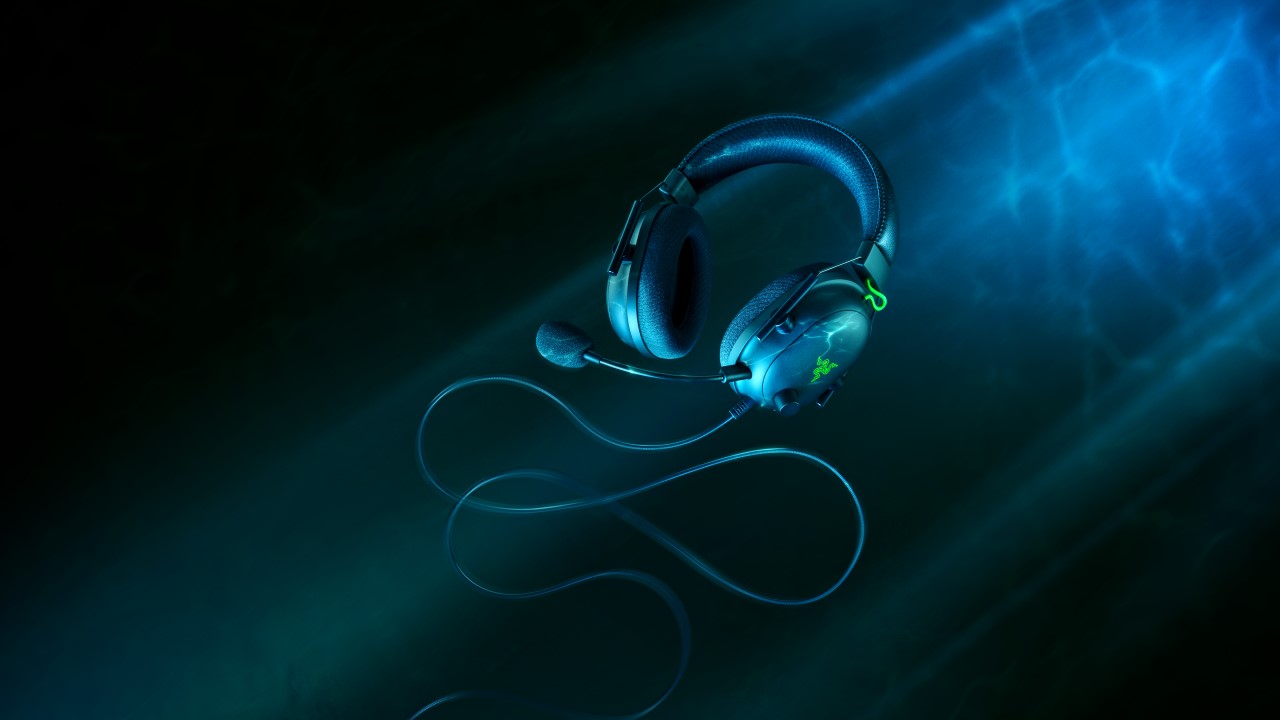
Overall - should you buy it?
There is a balance and clarity to all audio, here - in games, music, film, and work use - that I haven't heard for a while, if ever. And that's without enhancing any game audio from within the app or making changes here and there to EQs. Allow yourself a little enhancing and optimizing through the app and the sound card really proves its worth, elevating every use of the headset and the audio it gives you.
I can't overstate the combination of the BlackShark V2 working in conjunction with the app. Without it, it's still a serious contender for one of the best gaming headsets I've ever used, but with the app, the audio achieves hitherto unheard-of levels of clarity, richness, and quality. I imagine this will be a key method of augmentation of PC gaming headsets going forward (Razer or not, given that the THX Spatial app works with any headset). However, it's very important to say that, despite the enormous flexibility the headset-app combo offers, there's nothing to fear for those who prefer the plug-and-play-straight-out-the-box approach: the settings are so good by default that it's still a seriously excellent gaming headset even before you've done any customizing.
If you've read all of my thoughts, then the high score will not surprise you, and, given its price tag, the Razer BlackShark V2 is one of the easiest recommendations I can ever make for a gaming headset. This is a world-beating piece of kit. Not only is it one of the top Razer headsets the company has ever produced, but it is also one of the best PC headsets for gaming, and among the best gaming headsets of 2020.
And don't forget to keep your options open with the wireless version, the BlackShark V2 Pro headset:
Rob is the Deputy Editor of sister site, TechRadar Gaming, and has been in the games and tech industry for years. Prior to a recent stint as Gaming Editor at WePC, Rob was the Commissioning Editor for Hardware at GamesRadar+, and was on the hardware team for more than four years, since its inception in late 2018. He is also a writer on games and has had work published over the last six years or so at the likes of Eurogamer, RPS, PCGN, and more. He is also a qualified landscape and garden designer, so does that in his spare time, while he is also an expert on the virtual landscapes and environments of games and loves to write about them too, including in an upcoming book on the topic!

